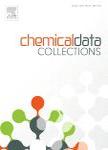版权所有:内蒙古大学图书馆 技术提供:维普资讯• 智图
内蒙古自治区呼和浩特市赛罕区大学西街235号 邮编: 010021

作者机构:Department of Chemical Engineering Environmental Engineering Laboratory Annamalai University Chidambaram Tamil Nadu 608002 India
出 版 物:《Chemical Data Collections》
年 卷 期:2018年第15-16卷
页 面:143-152页
主 题:Aqueous Two-Phase System Aqua waste Protein recovery Partitioning Response surface methodology ATPS Aqueous Two Phase System LLE Liquid-Liquid Equilibrium NaCl Sodium chloride PEG Polyethylene glycol TLL Tie Line Length (wt %) BSA Bovine serum albumin K p Partition coefficient C T Equilibrium concentration of protein in top phase C B Equilibrium concentration of protein in top phase V R Volume ratio V tp Volume of the top phase, mL V bp Volume of the bottom phase, mL ANOVA Analysis of variance RSM Response surface methodology BBD Box-Behken design KP Potassium phosphate system SS Sodium sulphate system AS Ammonium sulphate system 3D Three dimensional
摘 要:An acceptable polymer-inorganic salt Aqueous Two-Phase System (ATPS) has been discovered for the crude protein partitioning from aqua waste. This study determines the effect of type of salt, temperature, pH and neutral salt (NaCl) concentration on percentage recovery of protein in ATPSs which are composed of polyethylene glycol (PEG) 600 and three inorganic salts. In all systems, crude protein has displayed an affinity for the PEG-rich phase. The partition coefficient was found to be increased with increasing both PEG 600- inorganic salt concentrations. The higher value of tie-line length could maximize the percentage recovery of protein from aqua waste. This was mainly owing to the excluded volume effect and salting out effect in ATPS. PEG 600-Ammonium Sulphate system was found to be the most favorable system among the three ATPS which showed the maximum yield of crude protein that was 99.4% obtained at pH 5, sodium chloride concentration 0.3 M and temperature 20 °C.